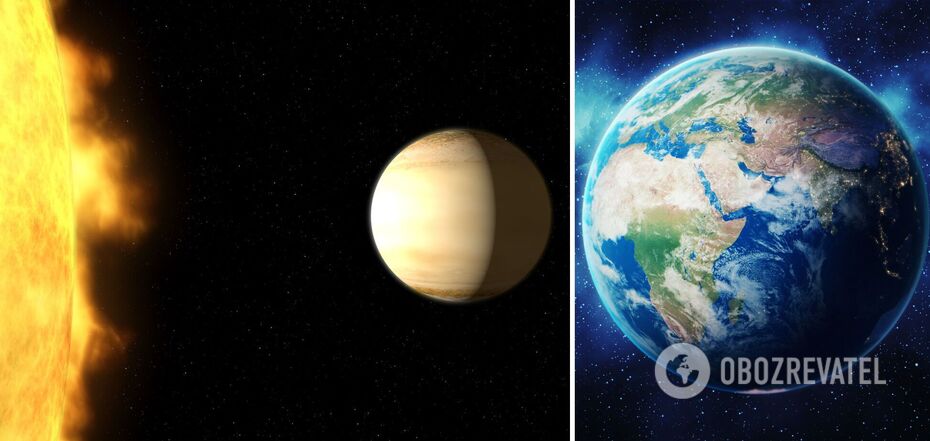Life
Process discovered in exoplanet's atmosphere that has never been seen outside the solar system
The giant exoplanet WASP-39b, which is located at a distance of about 700 light years from Earth, has discovered a photochemical process that has previously been observed only on planets in the Solar System.
The discovery was made by astronomer Shang-Ming Tsai and his colleagues from the University of California, Riverside (USA). To do this, they used the near-infrared spectrometer of NASA's James Webb Space Telescope (JWST). If this discovery is officially confirmed, it will be the first time astronomers have seen photochemistry in action on an exoplanet.
WASP-39b is about as massive as Saturn (the second largest planet in the Solar System). This exoplanet is very close to its star and makes a complete revolution in just 4 days.
The atmosphere on the exoplanet is hellishly hot - the temperature reaches 871°C - and contains carbon dioxide, water and a poisonous chemical called sulphur dioxide.
It is the poisonous sulphur dioxide that researchers believe is the product of a process called photochemistry. This is a process where the star's ultraviolet radiation triggers chemical reactions in the planet's atmosphere.
Photochemistry is a key process in the Earth's atmosphere, as well as on most of the planets in our solar system.
The discovery that photochemistry is also possible on planets in other star systems could help astronomers understand how different types of material in the disc around a newborn star come together to form huge planets like WASP-39b.
The sulphur dioxide detected in the planet's atmosphere is not rare in itself and can be found in trace amounts in the atmosphere of a gas giant, but astronomers did not expect the amount to be so large that it could be detected by the JWST instruments.
On Earth, sulphur dioxide is a pollutant produced by the combustion of certain fossil fuels. When mixed with water in the atmosphere, it can lead to acid rain.
Sulphur dioxide also erupts from volcanoes, as astronomers have seen on Jupiter's moon Io, where it makes up most of the hot, choking atmosphere.
But to understand where the sulphur dioxide in such volumes came from on the gas giant, Tsai and his colleagues had to run a series of computer simulations.
They managed to establish that the only way to produce such a large amount of sulphur dioxide is through chemical reactions in the atmosphere, which are triggered by ultraviolet light from the star.
"Photochemistry is important for planetary atmospheres in general. In our solar system, photochemistry is important for the Earth (the creation of ozone, which protects living organisms from the Sun's radiation - Ed.) and for planets farther from the Sun, such as Neptune and Uranus, where methane photochemistry is important for the formation of hydrocarbons and fogs," Tsai explained in an interview with Inverse.
Sulphur dioxide is also important to astronomers because it is one of the few chemicals that can be used to measure the metallicity of a gas giant.
The more mankind learns about what exoplanets are made of, the more we will understand how planets condense from the swirling discs of gas, dust and ice that orbit newborn stars.
In time, this could help Earth scientists reconstruct the early history of our solar system and possibly suggest where planets with the ingredients for life might be found.
Earlier, OBOZREVATEL also reported that astronomers managed to capture a strange radio signal from the rocky exoplanet YZ Ceti b, which orbits its star 12 light-years from Earth. Scientists suggest that the signal may indicate the existence of a magnetic field on the planet, which is essential for life.
Subscribe to OBOZREVATEL's Telegram and Viber channels to keep up with the latest news.



























